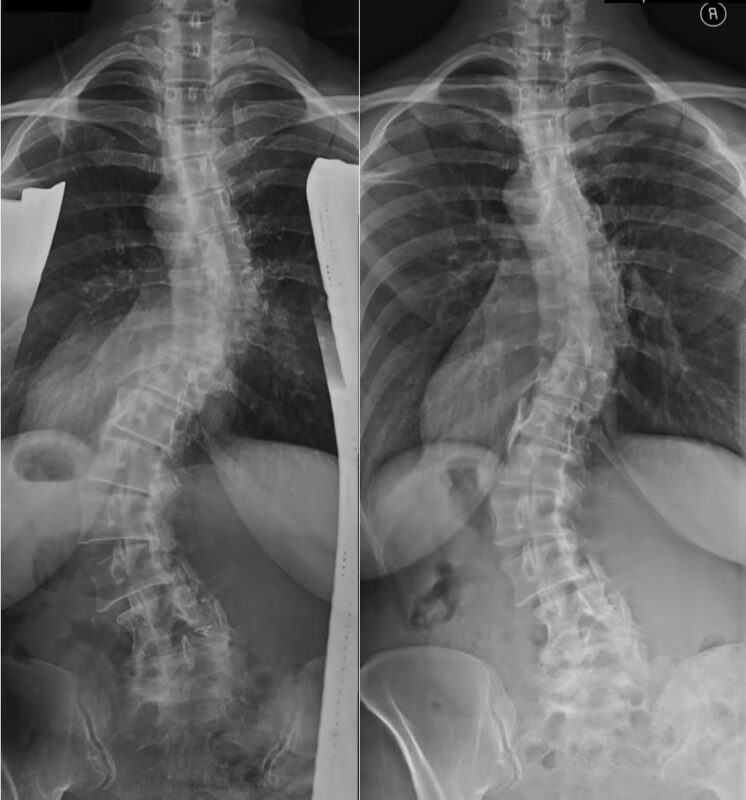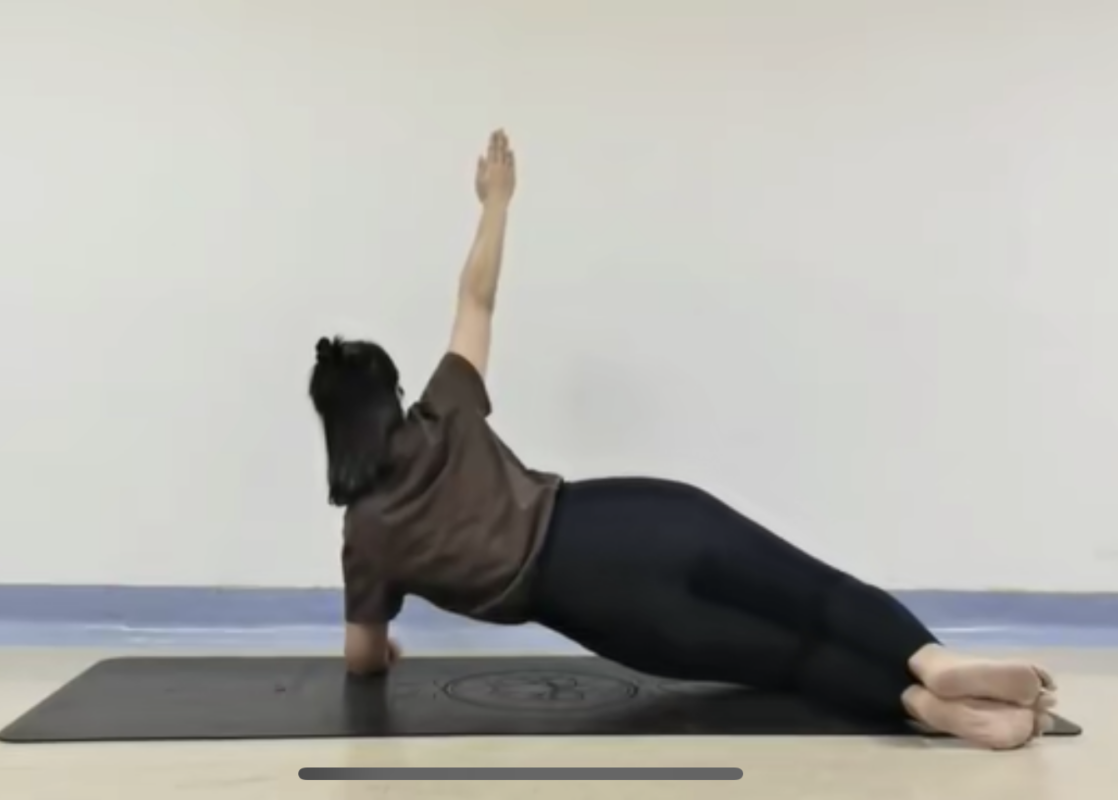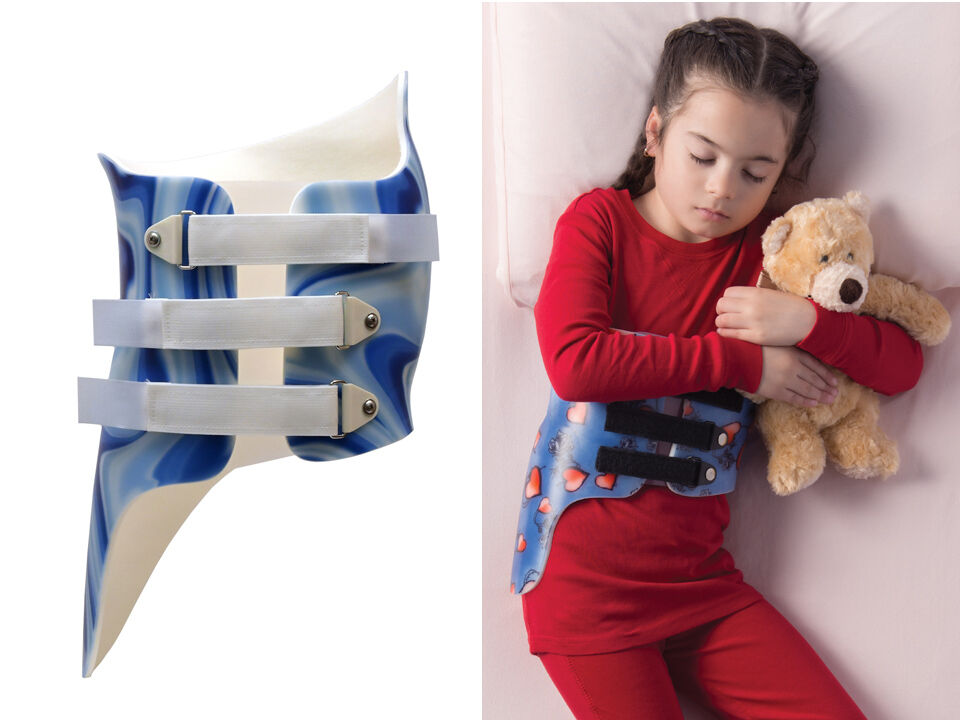Scoliosis is a condition characterized by an abnormal curvature of the spine, which can cause pain, discomfort, and limited mobility. While surgery is often considered the most effective treatment for severe cases, non-surgical approaches can be highly beneficial for managing and treating scoliosis. These non-surgical treatments aim to reduce pain, improve posture, and enhance overall quality of life for individuals with scoliosis. In this article, we explore various non-surgical approaches to manage and treat scoliosis, including physical therapy, chiropractic care, bracing techniques, electrical stimulation, yoga and Pilates, massage therapy, acupuncture, nutrition, and psychological support.
Comprender la escoliosis: Causas, síntomas y diagnóstico
Before delving into non-surgical treatment options, it is important to understand the causes, symptoms, and diagnosis of scoliosis. Scoliosis can be caused by various factors, including genetic predisposition, neuromuscular conditions, or idiopathic reasons. The most common form of scoliosis is idiopathic scoliosis, which typically develops during adolescence. Symptoms may include an uneven waistline, one shoulder higher than the other, or an abnormal curvature of the spine. Diagnosis is usually made through a physical examination, followed by imaging tests such as X-rays or MRI scans.

Non-Surgical Treatment Options for Scoliosis
Non-surgical treatment options for scoliosis focus on managing pain, improving posture, and preventing further progression of the curvature. These treatments can be highly effective, especially when started early. Physical therapy, chiropractic care, bracing techniques, electrical stimulation, yoga and Pilates, massage therapy, acupuncture, nutrition, and psychological support are all viable non-surgical approaches to managing and treating scoliosis.
Physical Therapy and Exercise for Scoliosis Management
Physical therapy and exercise play a crucial role in managing scoliosis. Physical therapists design personalized exercise programs targeting specific muscle groups to improve posture and strengthen the spine. These exercises include stretching, strengthening, and core stabilization exercises. Additionally, physical therapy can help alleviate pain and discomfort associated with scoliosis through techniques like manual therapy, heat therapy, or ultrasound therapy.

Chiropractic Care for Scoliosis: Benefits and Considerations
Chiropractic care is another non-surgical approach that can benefit individuals with scoliosis. Chiropractors use manual adjustments to realign the spine and improve its function. These adjustments can help reduce pain, improve mobility, and enhance overall spinal health. However, chiropractic care may not be suitable for everyone, particularly those with severe curvature or underlying medical conditions. Consulting with a healthcare professional before pursuing chiropractic treatment is essential.
Bracing Techniques for Non-Surgical Scoliosis Treatment
Bracing is a common non-surgical treatment option for scoliosis, particularly in adolescents with moderate curvature. Braces are designed to support the spine and prevent further progression of the curvature. They are typically worn for several hours a day and can be customized to fit the individual’s needs. Bracing can be highly effective in preventing the need for surgery and improving overall spinal alignment. However, compliance and commitment to wearing the brace as prescribed are crucial for successful treatment outcomes.
Electrical Stimulation and Scoliosis: An Alternative Approach
Electrical stimulation is an alternative non-surgical approach to managing scoliosis. This technique involves using low-level electrical currents to stimulate the muscles surrounding the spine. The electrical stimulation helps strengthen these muscles, improve posture, and reduce pain. While research on the effectiveness of electrical stimulation for scoliosis is limited, some studies have shown promising results. However, more research is needed to determine its long-term benefits and optimal usage.
Yoga and Pilates for Scoliosis: Strengthening and Alignment
Yoga and Pilates are popular forms of exercise that can benefit individuals with scoliosis. These practices focus on strengthening the core muscles, improving flexibility, and promoting proper spinal alignment. Specific yoga poses and Pilates exercises can help stretch and strengthen the muscles surrounding the spine, reducing pain and improving posture. However, it is essential to work with a qualified instructor experienced in adapting these practices for individuals with scoliosis.

Massage Therapy for Scoliosis: Relaxation and Pain Relief
Massage therapy provides relaxation and pain relief for individuals with scoliosis. Techniques such as deep tissue massage, myofascial release, and trigger point therapy can help alleviate muscle tension, reduce pain, and improve overall well-being. Regular massage therapy sessions can also promote better circulation, aiding the healing process. Consulting with a licensed massage therapist experienced in working with scoliosis patients is crucial for safe and effective treatment.
Acupuncture and Scoliosis: Balancing Energy Flow
Acupuncture is an ancient Chinese practice that involves inserting thin needles into specific points on the body to balance energy flow. Although scientific evidence on acupuncture’s effectiveness for scoliosis is limited, some individuals report pain relief and improved mobility after sessions. Acupuncture may be used as a complementary therapy alongside other non-surgical treatments. Always consult with a qualified acupuncturist and inform them about your scoliosis condition before undergoing treatment.
Nutrition and Dietary Considerations for Scoliosis Management
Nutrition plays a vital role in overall health and can impact scoliosis management. While no specific diet cures scoliosis, a balanced diet rich in essential nutrients supports spinal health. Adequate intake of calcium, vitamin D, and magnesium is crucial for maintaining strong bones and preventing osteoporosis, which can worsen scoliosis. Additionally, a healthy diet can help manage weight, reduce inflammation, and support overall well-being.
Psychological Support and Coping Strategies for Scoliosis Patients
Living with scoliosis can have a significant psychological impact. Providing psychological support and coping strategies helps individuals manage the emotional challenges associated with scoliosis. Support groups, counseling, and mindfulness techniques can reduce anxiety, improve self-esteem, and promote a positive mindset. Addressing the emotional well-being of scoliosis patients alongside their physical treatment is essential.
Conclusión
Non-surgical approaches to managing and treating scoliosis offer a range of options for individuals seeking alternatives to surgery. Physical therapy, chiropractic care, bracing techniques, electrical stimulation, yoga and Pilates, massage therapy, acupuncture, nutrition, and psychological support all play significant roles in improving pain, posture, and overall quality of life for individuals with scoliosis. Consulting healthcare professionals and specialists is crucial to determining the most suitable non-surgical treatment plan based on individual needs and preferences.
Referencias:
[Monticone, M., Ambrosini, E., Cazzaniga, D., et al. (2016). “Active self-correction and task-oriented exercises reduce spinal deformity and improve quality of life in subjects with mild adolescent idiopathic scoliosis: Results of a randomized controlled trial.” European Spine Journal, 25(10), 3113-3121.- Negrini, S., Donzelli, S., Aulisa, A. G., et al. (2018). “2016 SOSORT guidelines: Orthopaedic and Rehabilitation treatment of idiopathic scoliosis during growth.” Scoliosis and Spinal Disorders, 13(1), 3.
- Hresko, M. T. (2013). “Idiopathic scoliosis in adolescents.” The New England Journal of Medicine, 368(9), 834-841.
- Weinstein, S. L., Dolan, L. A., Cheng, J. C., et al. (2008). “Adolescent idiopathic scoliosis.” The Lancet, 371(9623), 1527-1537.
- Lonstein, J. E., & Carlson, J. M. (1984). “The prediction of curve progression in untreated idiopathic scoliosis during growth.” The Journal of Bone and Joint Surgery, 66(7), 1061-1071.
- Ceballos-Laita, L., Tejero-Garcés, L., & Jiménez-Castillejo, R. (2018). “The role of physiotherapy in adolescent idiopathic scoliosis: a systematic review.” Scoliosis and Spinal Disorders, 13(1), 18.
- Richards, B. S., Bernstein, R. M., D’Amato, C. L., & Thompson, G. H. (2005). “Standardization of criteria for adolescent idiopathic scoliosis brace studies: SRS Committee on Bracing and Nonoperative Management.” Spine (Phila Pa 1976), 30(18), 2068-2075.
- Negrini, S., Grivas, T. B., Kotwicki, T., et al. (2006). “Why do we treat adolescent idiopathic scoliosis? What we want to obtain and to avoid for our patients. SOSORT 2005 consensus paper.” Scoliosis, 1(1), 4.
- Wong, M. S., Cheng, J. C., & Lam, T. P. (2008). “The effect of rigid versus flexible spinal orthoses on spine deformity and body symmetry in adolescent idiopathic scoliosis.” European Spine Journal, 17(8), 1102-1108.

